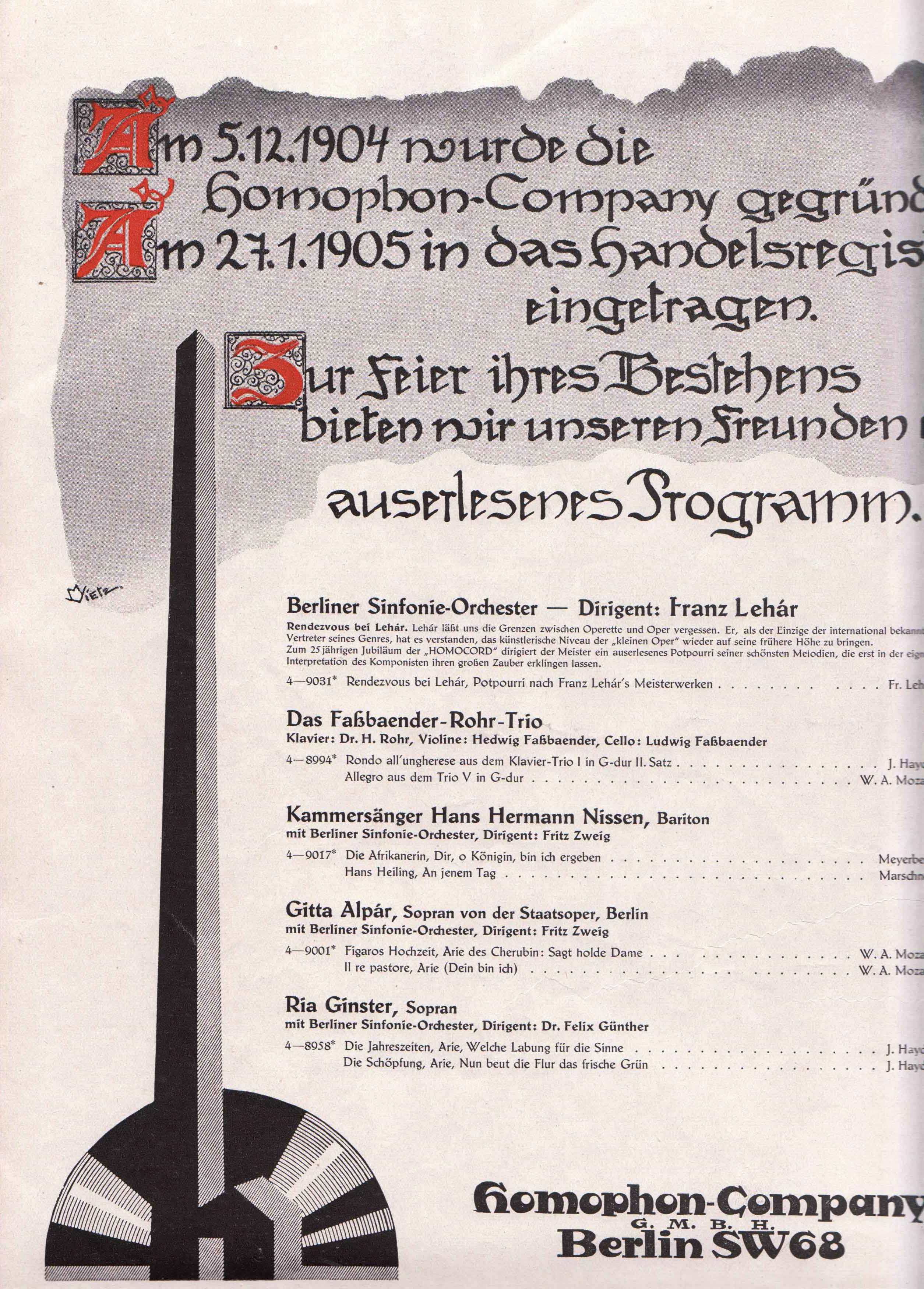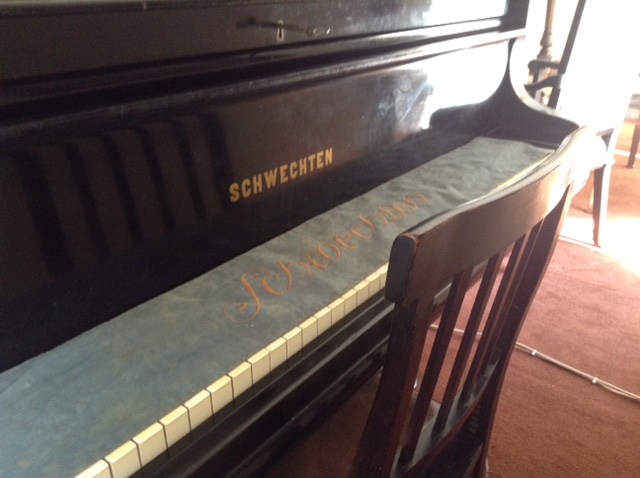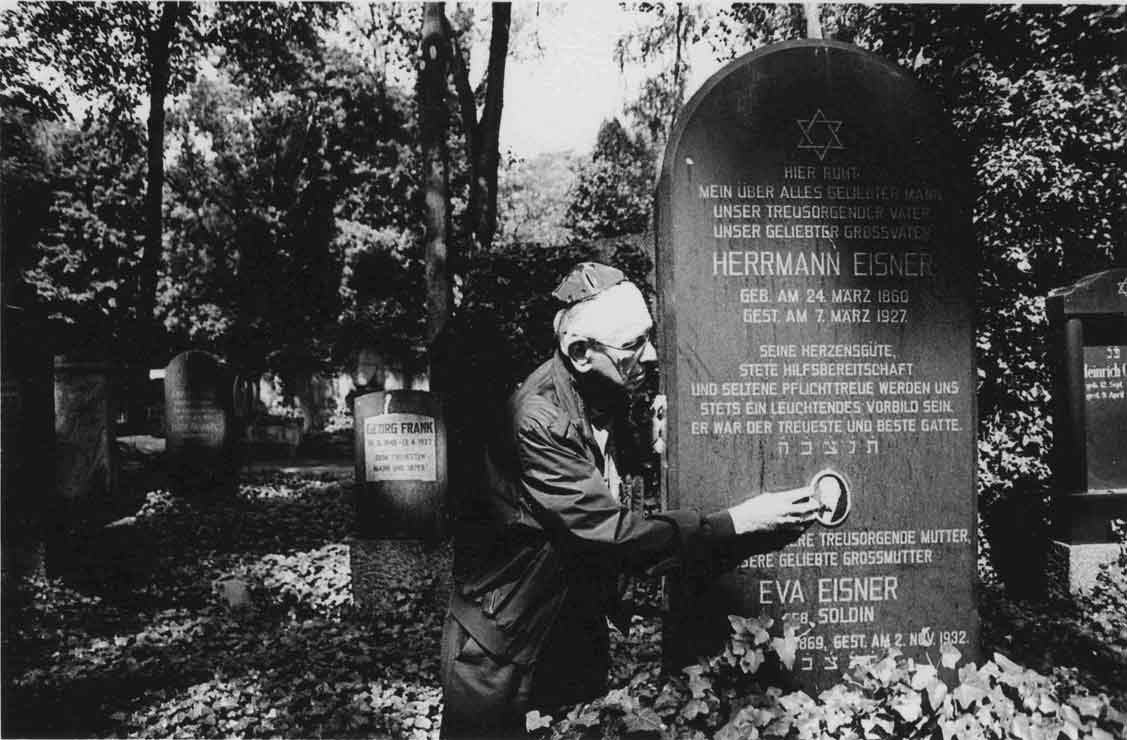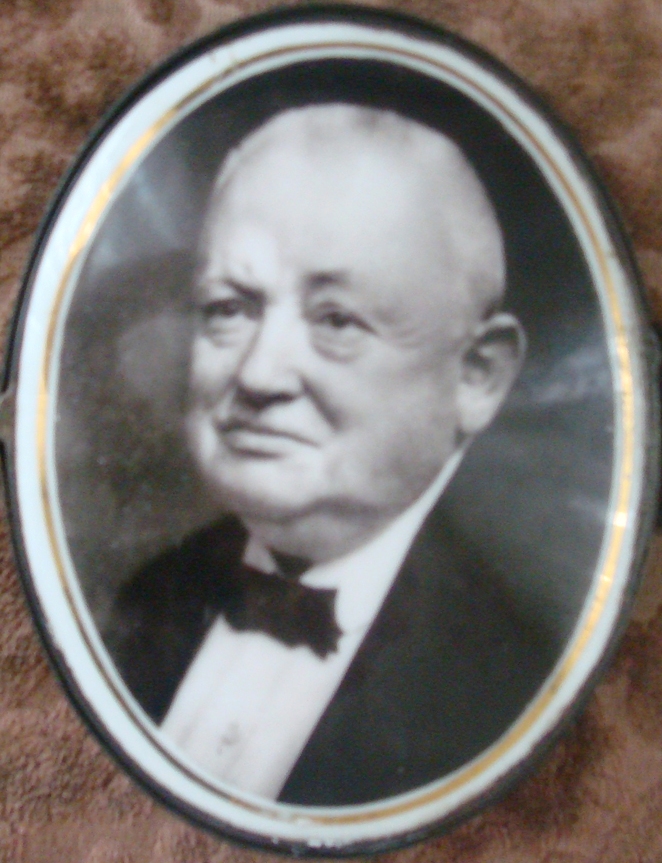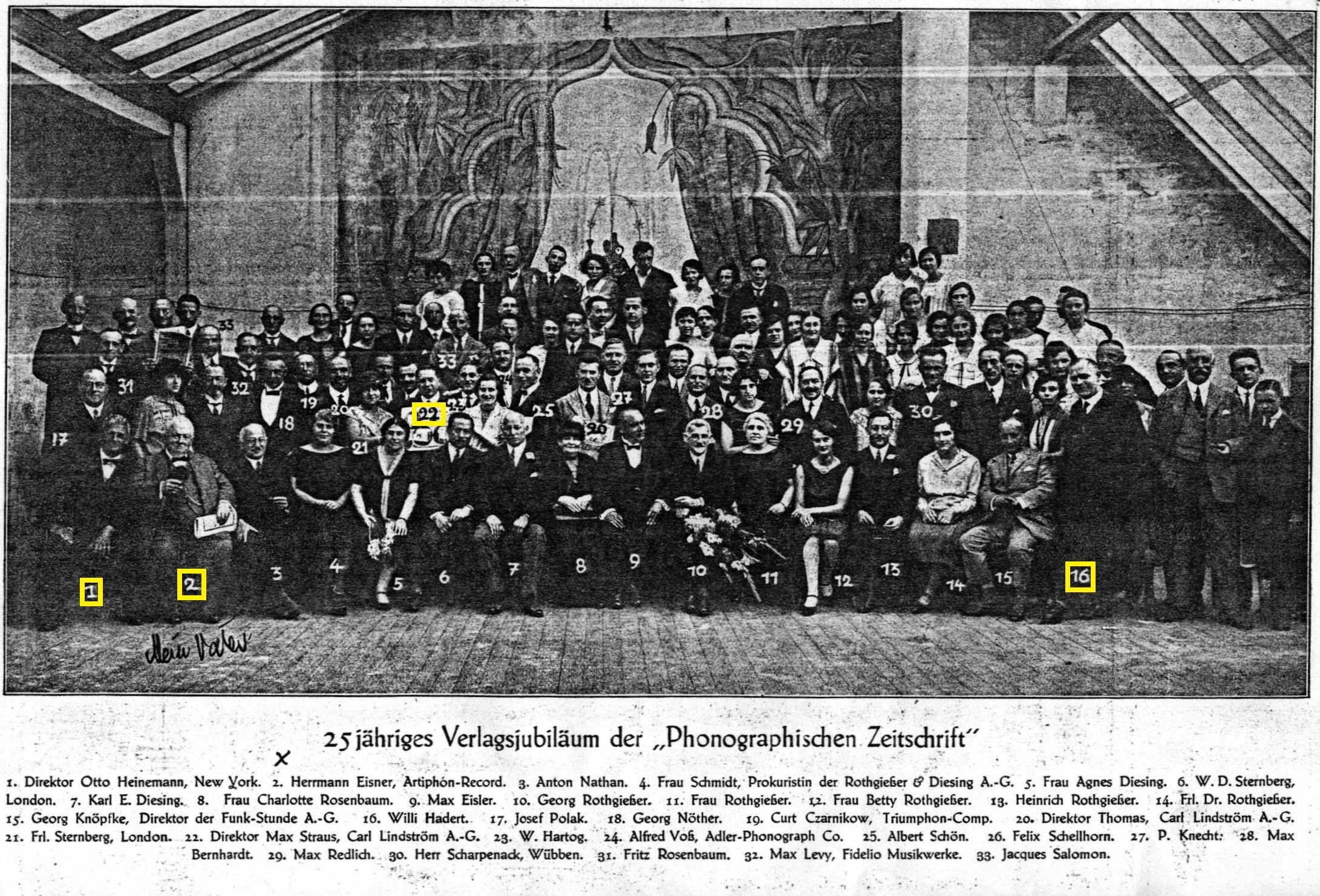PIONEERRESPOND
Hermann/Herrmann EISNER 1860 - 1927
 | |
| aka | Hermann Eisner, Herrmann Eisner, H. Eisner |
| nationality | |
| occupation | |
| birth | 24 Mar 1860, Brieg, Schlesien, GERMANY (present-day Brzeg in Silesia, POLAND) |
| baptism | |
| death | 7 Mar 1927, Berlin, GERMANY |
| burial | Weissensee Jewish Cemetery, Berlin, GERMANY |
| marriage | married on 28 Dec 1887, Berlin, GERMANY to:
 Eva SOLDIN Eva SOLDIN b. 13 Nov 1869, Birnbaum, GERMANY (in 1923 POLAND) |
| children |
|
PARENTS
| father | Louis EISSNER b. 11 Dec 1803/1823 |
| mother | Emma HEYMANN or HEIMANN b. ....... |
| children |
|
LIFE
Hermann Eisner [was born and - HS] attended school in Brieg.
Studied technology (mathematics, physics and mechanical engineering) at the Technikum (technical highschool) at Brieg, then Mittweida.
Practical training for about two years as a locksmith, model joiner, moulder and turning-lathe operator.
In 1882, after having worked in various firms as a technician, was appointed Second Engineer on the North German Lloyd steamer FULDA working the North American circuit.
Developed hardened steel razor blades for the brothers Kampfe of Dresden, who sold the invention to Gillette in the US.
In cooperation with Johann Heinrich of Luckenwalde started his first own company to produce pressed paper-plates (which he first saw in the US)
Married in 1887. First son Arnold was born a year later.
Worked as an inventor and obtained patents for mechanical toys.
In 1896 saw Edison phonographs for the first time in England; he decided to enter this line of business by assembling phonographs and be the first to sell pre-recorded cylinders in Germany.
In Berlin formed a partnership with Bahre, and the mechanics Költzow and, later, Pfeifer, to modify imported Columbia Baby phonographs for use by fair exhibitors.
In 1900 he founded his own firm Hermann Eisner in Berlin; he engaged the mechanics Gliewe & Kuegler to mold Lyra-type phonographs, fitted those with clock works provided by Anton Nathan, imported phonograph cylinders blanks from the US, and asked local talents to record songs and music.
The international sales representative was Czempin. After doing good business for three years he gave up production of phonograph cylinders due to cut-throat competition by large companies and pirates.
Meanwhile he had experimented with the production of Berliner-type flat disc records.
In 1904 he became co-founder of the Homophon(e) company in Berlin.
The major problem was the development of a suitable wax composition.
After starting with records made of Celluloid, he switched to caoutchuc (pressed by caoutchuc works in Hamburg) and, in 1905, started producing records using a shellac compound against the opposition of the British Gramophone Company which claimed various patent infringements.
As Homophon's technical director he was responsible for the recording process both in Berlin and on recording expeditions abroad.
He held this managing position until he resigned from Homophon in 1918.
He changed plans for retirement and soon after founded a new company, Artiphon records, in Berlin, which he headed until his death in 1927.
(unpublished biographical sketch of Hermann Eisner, written by Rainer Lotz)
ca 1906 HOMOPHON/HOMOKORD/ARTIPHON/RENSIE
Den Frühsommer 1906 verbrachte der technische Direktor der Homophon Company, Hermann Eisner, im Ausland: "Er hat in einer ununterbrochenen Tätigkeit, die ihn länger als drei Monate in Anspruch nahm, .. die Aufnahmen für die Gesellschaft in Frankreich, Spanien und Portugal zustande gebracht und zugleich grosse Abnehmer für diese Marke gewonnen... Herr Eisner hatte das Glück, in Lissabon Sänger aus Südamerika und Westindien zu finden,
die für diese Länder in Betracht kommen und dadurch konnte er sich die Ozeanreise und eine recht beschwerliche Tour nach Mittel- und Südamerika ersparen" [die Sprechmaschine, 21.07.1906]
"Der Inhaber der heute noch in Berlin bestehenden Schallplattenfabrik Artiphon Record, Hermann Eisner, gehörte zu jenen deutschen Pionieren, denen nach den amerikanischen Mustern eine erfolgreiche eigene Herstellung von Schallplatten und Sprechapparaten und deren Vertrieb in Deutschland gelang. Noch bis zum Jahre 1903 fabrizierte Hermann Eisner Walzen, hatte aber schon in der Zwischenzeit Versuche mit der Herstellung von Schallplatten nach dem Prinzip der "Berliner Schrift" gemacht, welche zu günstigen Resultaten führten. Die ersten Schallplatten hatte er aus Zelluloid, dann aus Kautschuk und später erst aus einer Komposition von Schellack und anderen harzartigen Massen hergestellt. Die erfolgreichen Versuche wurden durch grosse Aufträge von Seiten deutscher Exporteure belohnt." Die Phonographische Industrie in Deutschland unter besonderer Berücksichtigung ihres Exports by Rolf Krebs (Greifswald, 1925), p. 19

Hermann EISNER (sic)(63y) merchant
+ Eva EISNER (53y) wife
+ Emilie SOLDIN (81y) private
SS "George Washington"
dep. Bremen: 21 Sep 1923
arr. New York: 1 Oct 1923
nearest relative in country whence alien came: Arnold EISNER, AITIPHAN REAVD (sic = ARTIPHON RECORD), Berlin, GERMANY
... Hermann Eisner G. mb H. in Berlin SW 19, ... Hermann Eisner. Stammkapital RM. 100000, . Geschäftsführer: Walter Eisner und Hellmuth Lemm.
Zeitschrift für Instrumentenbau, Volume 53, edited by Paul Marie Guillaume Joseph de Wit, 1932 p. 118
NOTES
- De eerste 40 jaar van de Duitse platenindustrie. Deel 2: Anker Record by E. M. van Oirschot (in: De Weergever 6e jaarg. no. ? of ? 1985, pp. )
- Die Phonographische Industrie in Deutschland unter besonderer Berücksichtigung ihres Exports by Rolf Krebs (Greifswald, 1925)
- De eerste 40 jaar van de Duitse platenindustrie. Deel 3: Homophon GmbH by E. M. van Oirschot (in: De Weergever 8e jaargang, no. 1 of januari-februari 1986.)
- unpublished biographical sketch of Hermann Eisner written by Rainer Lotz
- Dating Homocord (-phon & -kord) Records by Peter Hulpusch (in: The Record Collector vol. 24, no. 3-4 (June 1979), pp. 80-81)
- Zur Geschichte der Schallplatte: Homocord 1905-1932 by Hansfried Sieben (in: Stimmen die um die Welt gingen.. Heft 6 (Dec 1984), pp. 13-15)
- Mehr über Homocord by Peter Hulpusch (in: Stimmen die um die Welt gingen.. Heft 10 (Dez. 1985), p. 58-60)
- Alte Schallplatten-Marken in Deutschland by Franz Schorn, p. 41 (Florian Noetzel Verlag. Wilhelmshafen, 1988)
- The Homophon Co. of Berlin (in: die Sprechmaschine No. 4. p. 85-86 of ...... 1906)
- Homokord: Het dateren // Een catalogus in wording by Peter Hulpusch (in: De Weergever 7e jaargang, no. 37, of Januari-Februari 1985)
- die Sprechmaschine of 21 July 1906
- Homophone in Britain by Frank Andrews (in: Hillandale News 147 (Dec. 1985): 284-290 (part 1); 148 (Feb. 1986): 312-317 (part 2); 149 (Apr. 1986): 5-8 (part 3); 150 (June 1986): 32-35 (part 4))
- Claims Resolution Tribunal. (in: re Holocaust Victim Assets Litigation Case No. CV96-4849)
- Zeitschrift für Instrumentenbau, Volume 53, edited by Paul Marie Guillaume Joseph de Wit, 1932
- British Homochord and Homophone records -- dating guide by Peter Copeland (Pt. 1 in Historic record & AV collector quarterly, no. 22, January 1992, p. 22-25; Pt. 2 1921-1929: the heyday of Homochord in Historic record & AV collector quarterly, no. 23, April 1992, p. 23-26; Pt. 3 in Historic record & AV collector quarterly, no. 24, July 1992, p. 11-15
- Notizen: Unter der technischen Leitung des Herrn Herrmann Eisner hat sich seit einiger Zeit eine neue Schallplattenfabrik unter der Firma "Homophon Compagnie m. b. H." etabliert ...... etc. ( in: Phonographische Zeitschrift 6. Jahrg., No. 6, p. 102 (8 Feb 1905))
PHOTOS
THANK YOU
Rainer Lotz
Lesley Ann Price (née Lesser)
Susan Woolf (née Lesser)





